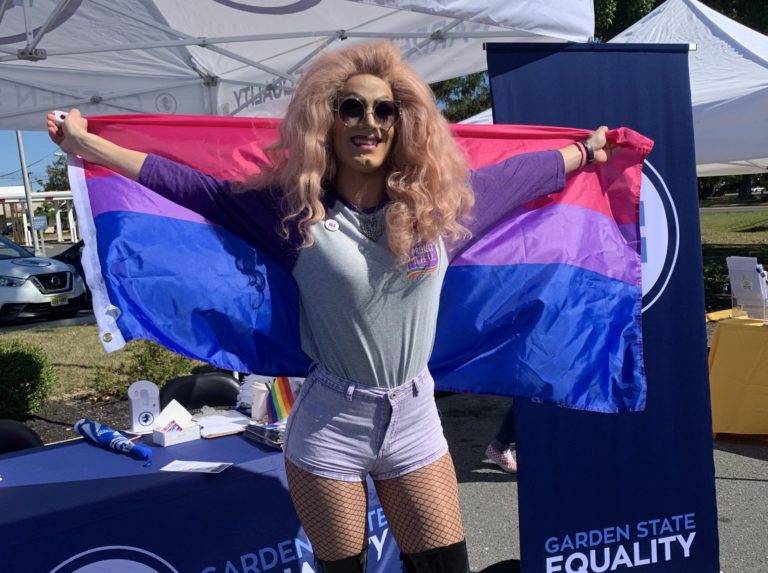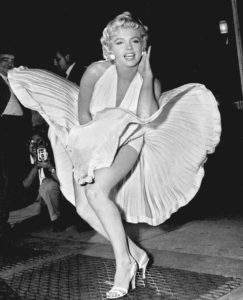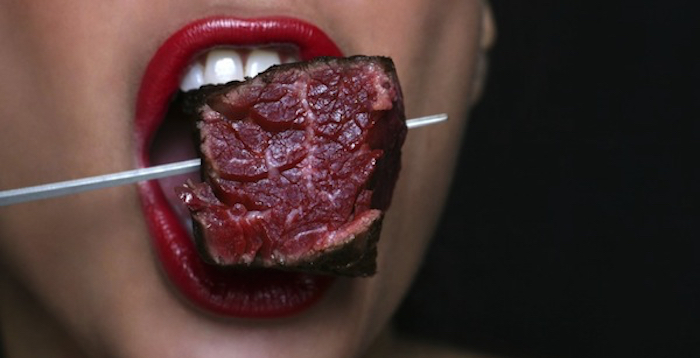How to Flirt with Communication in Your Relationship
What communication is:
Communication is the real, honest-to-goodness relating that leads to genuine intimacy and a healthy bond between two people. And, good communication leads to good sex that will only get better as a couple gets to know each other more deeply.
If you’re in a relationship that you don’t want to be in, there’s probably little communication. But if you’re in a relationship that works, my sense is that you have good communication. In my years as a sex educator and counselor, I have noticed that there are many roadblocks and problems preventing people from having a consistently successful love life. One of the most common is the lack of communication or improper communication.
Isn’t it great that communication isn’t confined to just words, though? That makes it so much more fun to explore this subject, especially when you want to have a new adventure with your partner, erotic or otherwise. Communication is reflected in our voice tone, body movements and our speech patterns. Communication is even conveyed by what we don’t say, sometimes.
Communication can be subtle, too; you don’t always have to be hit over the head with an anvil to get the point. A partner’s raised eyebrow may be sufficient to indicate a whole range of meanings, such as surprise, contempt, glee, superiority or annoyance.
Relationships that grow evolve and are the most emotionally and sexually fulfilling all have this secret ingredient of communication binding them together. Why is communication like a secret ingredient? Because it involves opening up all our five senses. To utilize this secret ingredient, we must be open to what information our senses are conveying, and then translate that input into words.
Openness is the key word! Remember the magic words Ali Baba used in the Arabian Nights to open the door of the robbers’ den, so he could get to the treasures inside? “Open Sesame.” That fairy tale term has become a modern buzz word for “gaining admission;” it is a secret password. Ali Baba knew the secret of communication: Be willing to use the password, and be willing to “open.” Ali Baba didn’t know all that he would find behind that door. He didn’t even know for sure if the password would work. But he was open.
How to change your perception of communication:
What we really want to know is, “Am I getting across the way I intend?” We all grew up in families that communicated in certain ways, whether effectively or not. We are comfortable with the communication patterns we learned at home. We often don’t think about growing beyond that point, yet it may be vital in a relationship. In your career life, you have to keep up with modern technology to stay afloat, much less to get ahead. Our relationships should be just as important. Don’t be afraid to learn how the other person communicates. How did your partner’s family relate to each other, and can you glean something from their communication patterns that you can add to your own “communications repertoire?”
Positive communication
This “dating game” stage of a relationship, the first few months, should keep its focus on positive communication. Find out about each other. Use questions to draw each other out. Focus on your commonalities and how they can enhance your relationship. Talking is very important during this stage, but listening is equally as vital. Rewarding each other with positive feedback, compliments and reassurances can set the stage for closer contact.
Get to know what one another likes first and then savor the verbal foreplay. Do talk about your hobbies, places you like to go, positive aspects of your family and friends, your work, goals and aspirations. Don’t talk about old relationships, problems, money or sex on a first date.
Intimate communication
Remember, communication is the number one ingredient for a consistently successful love life. The second rule of thumb is “say what you feel.” Saying what you feel is giving audible language to the flow of feelings, discovering and articulating those emotions that are the constant undercurrent of our lives.
Revealing these emotions is a way for you to continue to endear yourself to your partner. We often think that intimacy is created merely by chemistry or by what we do, plan or pursue together. But, it is actually getting to know another person through his or her emotions that makes us feel truly connected. So if you want to move from dating to intimacy, communicate your intentions.
For example, would you ask your date how they like their coffee? Of course you would. So then, why wouldn’t you ask your partner how they like to be touched? The fact is that most people either think that their partner will automatically like what they like sexually, or they think their partner should be able to read their mind. Find out about your dates “romantic
list.” Do they relish in eating bon bons by the fireplace, snuggling up with popcorn and a movie, caviar and toast points or does getting their head massaged make them feel loving? It’s up to you to discover their secret romantic list.
Here is the opportunity to explore the passionate power of words. Before becoming
intimate, before having sex with your partner for the first time, find out what each of
you likes in bed. This is a level where both of you will feel sensitive. If you are about
to take the plunge, talk about your needs more openly. Certainly if you were
preparing a steak for your partner, you would ask your partner how he or she likes it
cooked. After all, you wouldn’t want to ruin a good piece of meat. So why risk the
demise of a perfectly good relationship?
It can be difficult to talk about sex because we aren’t given courses in school on how
to do it. And most likely, our parents didn’t give us much help in this area, either.
We plunge into relationships expecting our partners to know our needs by osmosis,
and that’s rather presumptuous, isn’t it? How can we expect someone else to know
where to touch us if we don’t find a positive way to tell them? In love-making, we
are totally on our own; maybe that’s why it can feel so awkward to express what we
want and find out about our partner’s desires and needs. But we may fear rejection
or be afraid we can’t measure up.
No ironclad rules exist to fall back upon; we just have to “wing it” and “risk it.” And
maybe that’s a good thing, if it opens us up to talk more freely. If you were lost in a
foreign city, you would certainly seek out someone you could talk to and ask about
directions. You would be just as vulnerable in that situation, too. Asking for
directions in love-making is just part of getting where you want to go.
We aren’t just dealing with erotic needs at this level, but intimate, nurturing needs.
If it feels scary to ask for erotic nurturing, first tell one another how much you
respect him or her and how you want to please each other. Ask each other about
turn-ons in the way of lovemaking.
Go slowly; the more time you take, the more excitement you build up and the more barriers you break down. Tantalize your partner with the possibility that you can fulfill each other’s wildest dreams and fantasies. Verbal foreplay is extremely important at this stage. You might say things like “You look so inviting lying there like that, it makes me want to kiss you from head to toe.” Tell each other the little things that feel good or entice, such as, “I love your smile and that’s such a turn-on to me,” or “It feels so sexy when you lightly
finger-massage my back.”
Give each other positive feedback during and after love-making. Feel free to ask that
your needs be met; express what you need by saying things like, “I need to be held
close after making love,” or “I just can’t get enough oral sex from you. I love the
feeling of surrender when you take me in your mouth.”
And if your partner is reluctant to open up, then ask, in a gentle and loving way. Ask what his/her deepest desires are, and how you can meet them. And if that first love-making session isn’t everything you want, tell each other in a positive way what turns you on and what doesn’t. Instead of saying, “You chewed on my ears as if they were made out of beef
jerky,” you could say, “I really enjoyed it when you kissed and licked my ears gently.”
How to Say “No”
Let’s also look at a healthy way to say “no” without hurting your lover’s feelings.
Even the best relationships have bad days, so here are a couple of tips on how to de-
escalate conflict and make it easier to attain resolution. I want to give you a simple two-step process in which you acknowledge what your partner wants, then you
negotiate and compromise by using positive reinforcement.
Step 1:
Instead of blaming your partner with sentences that begin with “you,” try saying “I feel,” and let your partner see your vulnerability and hurt. Here’s a common example: “You always go to sleep after we make love, and I’m frustrated.” A better way to express this would be: “I love making love to you; you make me feel so good. Maybe next time we make love, we can spend some time cuddling because it means so much to me when you hold me in your arms before you fall asleep.”
Step 2:
Listen to your partner when he/she is expressing feelings, then repeat what your partner said using your own words. Your partner will either agree with your translation or will correct you. Once it’s clear, you can state your own point of view and repeat the process. Let’s pretend your partner is saying this: “I’m really feeling insecure lately, because you don’t spend as much time kissing me as you once did. I know we have sex all the time but I really miss the intimacy of kissing.” Now, repeat in your own words what you think your
partner is saying here. Perhaps your partner wants more affection or reassurance. By telling your partner what you think he/she means, you open a line of communication and that can bring you closer together.
Also, remember these three pointers when dealing with your partner:
1) Presume your mate is innocent until proven guilty.
2) Be curious rather than furious.
3) Try to understand your partner’s actions from his/her point of view.
Once two people have connected in an intimate way, the relationship changes
course. We all feel more vulnerable after sex has entered into the picture. The union either grows stronger at this point, or interest in each other wanes. If you can talk
and be more open with each other, the sexual intimacy goes to a deeper level and
gets better and better. But if you emotionally distance each other, the relationship
can end.
Physical, Mental and Spiritual Communication
This is the deepest form of communication. At this level of your relationship, you are becoming attuned to each other’s physical needs, you have that blissful mind-to-
mind connection and you feel that soul-mate resonance. But couples often revert to Level One at this point, because they’ve made the conquest or they’re married and
don’t feel a need to keep trying.
It is of extreme value at this level to keep investing in the relationship. It is imperative to set aside one hour of communication time each day, to keep current on each other’s needs and to know each other more deeply.
Don’t take the relationship for granted just because you have secured each other.
Continue to do spontaneous little things for the one you love, and find out if he or
she likes new adventures or new interests. One couple I know was together for five
years before they discovered they both liked roller-skating. This added a new zest to
their relationship.
You never know what surprises that one hour per day can bring you. And it can
really secure everlasting love between the two of you, more so than presuming
everything is okay. Your connection with each other will keep growing on all levels.
Moving beyond communication:
The way to move beyond communication is through more communication. Then we
no longer fear talking to each other. It becomes as natural as breathing. If we have
feared rejection, intimacy, inadequacy, and being able to talk about and deal with
these very common problems, then more and better communication can’t hurt. It
can only improve any situation. Even if your partner tells you a little more than you
wanted to know, that provides you with yet another topic for discussion. Then you
can clear the air and move on.
Conversation
How many times have you seen someone you wanted to meet but couldn’t think of
anything to say? Then they vanished and you wanted to kick yourself! First
impressions are important, but it’s not the end of the world if you don’t have a great
opening line to impress someone. You do, however, have to say something. Why do
you think people talk about the weather so much?
The easiest and most effective conversation starter is to give a compliment. Then
follow it with a question to maintain the conversation. And you can always talk about
the environment you’re both in. Remember, the more interested you are in people,
the more interesting you are to them. Be a good listener and find common ground.
Everyone has something conversational to tell you. Your mission is to find out what it
is. It could be anything, where they are from, why they chose that tie, or what they
had for breakfast. Any open-ended question will do. Pretend you’re a journalist
interviewing them. Ideally, you both should be asking each other and answering one
another’s questions. In this way, the conversation never gets to that awkward, ”now
what?” stage.
Secrets of Conversation:
Now that you have some guidance on how to get a conversation started, it’s
important to recognize that not only words but also voice-quality is an important
ingredient in heightening the impact and effectiveness of your conversation. It also
helps to be aware that people are particular in the way they like to communicate,
primarily as represented by (1) “visual” or image-stimulation, (2) “kinesthetic” or
feeling-stimulation and, (3) “auditory” or sound-stimulation.
Visual people want to know how they look. They want to see images and they like
to look at the person talking to them. They also enjoy someone who speaks with
passion and has lots of expression in their voice. Visual people want to be admired
for how good they look. They want to be seen as sexy, beautiful or handsome. Tell
them, “You look great” or “Your hair looks shiny and beautiful.”
Kinesthetic people are feeling oriented. They like to be held, touched, stroked and
to hear what you are feeling and sensing. They relish the emotional feelings of words
and favor slow, sensuous dialogue. Tell a kinesthetic person, “I feel good being with
you” or “Your skin feels like silk.”
Auditory people are good listeners and like the sound of words. They enjoy great
detail and will often analyze what you have said. The tone of your voice is important
and the inflections used in a sentence can often make the difference between
ordinary or extraordinary communication. Give an auditory person a lot of
information about why, what and how. “I love being around you because you make
me feel so good.”
Good communication involves all three of these modalities, but your best chance of
“making a good first impression” depends on your ability to recognize the effect your
words are having on your “intended.” Ask that new person some basic questions,
and then pay particular attention to the responses.
When you open a conversation with someone new, the words you choose to open
that first conversation can be the most important words you will ever speak,
especially as part of your quest for “finding everlasting love.” And remember that the
words and actions that are necessary to communicate your feelings and intentions in
a continuing dialogue with that special person will depend on your perceptions and
reactions to the words and actions of your partner.

































